Planning your own trip? Prepare for your trip
Use Rough Guides' trusted partners for great rates
- maratea
- Italy
Book your individual trip, stress-free with local travel experts
Plan your tailor-made trip with a local expert
Book securely with money-back guarantee
Travel stress-free with local assistance and 24/7 support
Rakesh, USA
It was my first time using rough guides and it will not be my last. From the first time I connected with the team it had been great. They were easy to comm...
Read all reviews ⤍Chances are, once you’ve experienced the joys of travelling in Italy, you might never want to visit anywhere else. Its cultural legacy is awe-inspiring, with remnants of the Roman Empire manifest at (pretty much) every turn. Then there’s the diverse landscapes, and the fabulous food - all underpinned by an unmistakeable character of living life to the full.
All the information here is from The Rough Guide to Italy, our in-depth Italy travel guide - check it out for your all your Italy travel needs.
For more Italy travel tips, read our facts about travelling in Italy article.
Every trip to Italy is unique and that's why it's essential to stay protected. With our go-to travel insurance provider, Heymondo, you get great value and 24/7 support wherever you are.
Figuring out where to go when you visit Italy is no mean feat. From ancient hilltop towns to modern bustling cities, dramatic mountain landscapes to sweeping coastal scenery, each pocket of Italy delivers something different.
Rome, Italy’s capital, is the one city in the country that owes allegiance neither to the north or the south. It’s quite unlike any other city, and in terms of historic sights it outstrips everywhere else by some way.
Rough Guides tip: Explore our detailed guide on how to get around Rome to feel more confident during your Rome holidays.
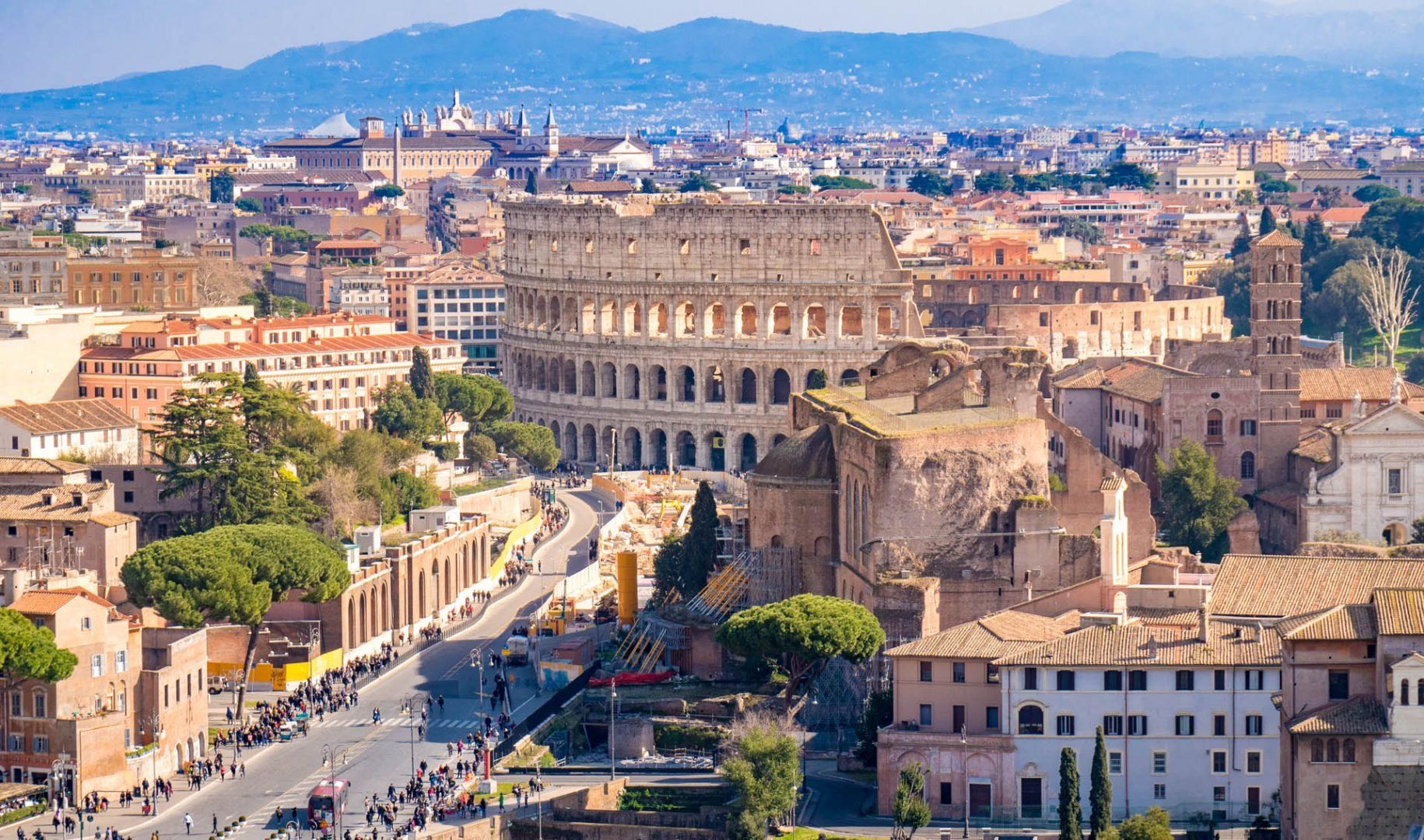
Rome from above aerial view of the Roman Forum and the Colosseum © Calin Stan/Shutterstock
The northwest regions of Piemonte and Lombardy make up the country’s most cosmopolitan region, and the two main centres, Turin and Milan, are its wealthiest cities. In the north, the presence of the Alps makes skiing and hiking prime activities, while Lombardy’s lakes and mountains are time-honoured tourist territory.
Liguria, the small coastal province to the south, has long been known as the “Italian Riviera” and is accordingly crowded with sun-seekers for much of the summer. Its capital, Genoa, is a vibrant port town with a long seafaring tradition.
The Dolomites stretch into the northeastern regions of the Veneto and Friuli-Venezia Giulia, but the main focus here is Venice. This unique city is every bit as beautiful as its reputation suggests.
Emilia-Romagna’s coast is popular among Italians, and Rimini is Italy’s brashest (and trendiest) seaside resort. Then there’s the ancient centres of Ravenna, Ferrara, Parma and regional capital, Bologna, one of Italy’s liveliest cities, and traditionally its gastronomic and academic capital.
Central Italy represents perhaps the most commonly perceived image of the country. Tuscany, with its classic rolling countryside and the art-packed towns of Florence, Pisa and Siena, is one of Italy’s most visited regions.
Neighbouring Umbria is similar in all but its tourist numbers, though it gets busier every year, as visitors flock to towns like Perugia and Assisi.
Campania’s capital, Naples, is a unique, unforgettable city, the spiritual heart of the Italian south, and close to some of Italy’s finest ancient sites in Pompeii and Herculaneum, not to mention the country’s most spectacular stretch of coast around Amalfi.
Considering Naples for your trip? Check out our list of the best places to stay in Naples.
Puglia, the “heel” of Italy, has underrated pleasures, notably the landscape of its Gargano peninsula, the souk-like qualities of its capital, Bari, and the Baroque glories of Lecce in the far south.
The island of Sicily is a place apart, with a wide mixture of attractions ranging from some of the finest preserved Hellenistic treasures in Europe, to a couple of Italy’s most appealing beach resorts in Taormina and Cefalu, not to mention some gorgeous upland scenery.
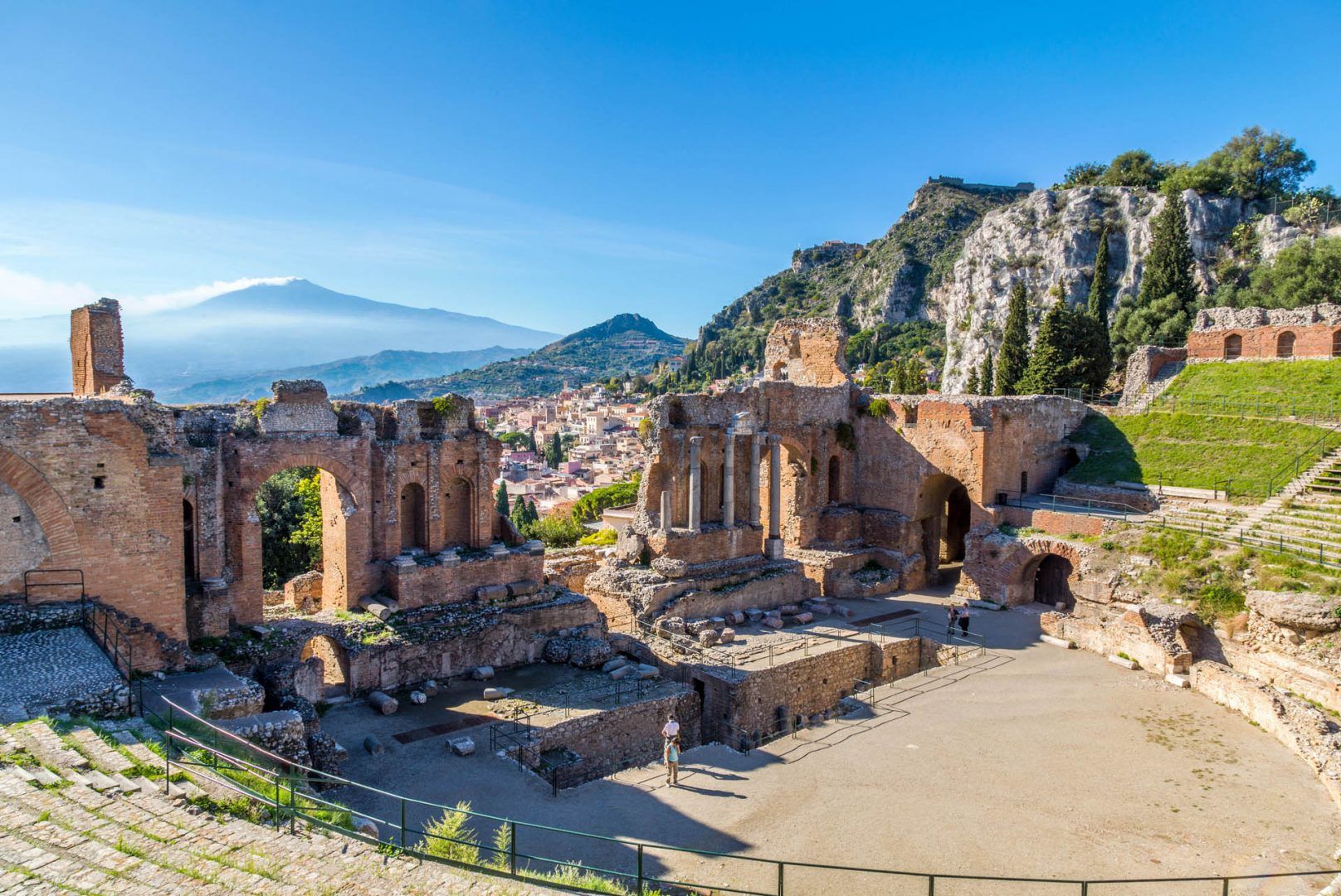
The stage of Taormina's Greek Theater with the Etna in the background, Taormina, Sicily © K. Roy Zerloch/Shutterstock
Sardinia feels far removed from the mainland, especially in its relatively undiscovered interior, although you may be content just to laze on its beaches, which are among Italy’s best.
Planning a trip to Sardinia? Don't miss the opportunity to choose a place to stay that fits your needs.
Picking landmarks and attractions in Italy everyone should see in a lifetime is a nigh impossible task, but we’ve taken a stab at selecting some of the best places to travel in Italy; sights that will enhance every Italy trip experience.
Discover more great places to see in our ultimate list of things not to miss in Italy.
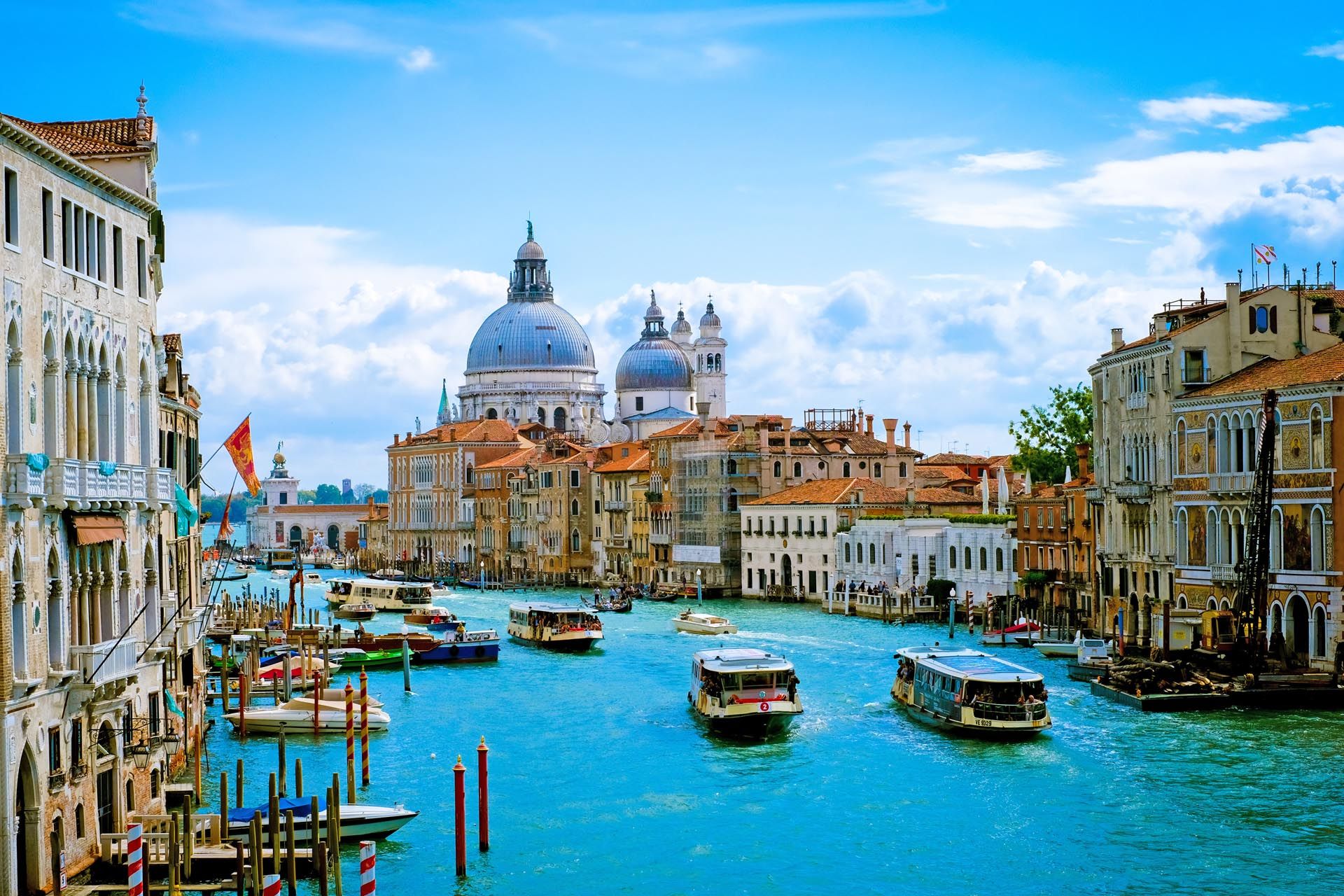
Grand Canal, Venice, Italy © Apple Kullathida/Shutterstock
Rome alone has enough historic attractions to warrant dozens of visits (and that’s no exaggeration). Discover more about the Eternal City’s ravishing ruins and architectural treasures, from the Colosseum and the Roman Forum, to the Spanish Steps and the Vatican.
Florence is an exquisite city of exquisite art, the jewel in its elegant crown Italy’s finest art gallery, the Uffizi, home to Botticelli’s “The Birth of Venus” and Caravaggio’s “Medusa”, to name but a few of its masterworks. Though meandering Venice’s winding alleys and canals feels like you’re exploring a museum (such is the city’s beauty and uniquely curated vibe), the Accademia museum is an absolute must-visit for art-lovers.
The extensive Italian coast offers plenty of opportunities for sailing and windsurfing. Scuba diving is popular in Sicily and off most of the smaller islands. Water-sports aren’t just restricted to the coast - they can be found in places such as lakes Como and Garda in the north, and Trasimeno and Bolsena further south towards Rome, while river canoeing, canyoning and rafting are popular in the mountain areas of the north of the country. Discover more about sports and outdoor pursuits - our Italy guide to all things active.
Of course, Italy’s coast isn’t all about high energy pursuits. Its beaches are stunning places to soak up the sun; people watch and pose; eat, drink and generally be very merry. Discover the best beaches in Italy, spanning secluded coves, lively seafronts, and dramatic cliff-backed harbours.
With the Alps on the doorstep, it’s easy to spend a weekend skiing or snowboarding from Milan, Turin or Venice. Some of the most popular ski resorts are Sestriere and Bardonecchia in Piemonte, and Val di Fassa in the stunning Dolomite mountains. Find out about the best winter resorts for skiing.
All these mountain resorts are equally ideal as bases for summer hiking and climbing. The dramatic, spiky landscape of the Dolomites, for example, is perfect hiking country, with its trails often subject to snow, ice and scorching sun in the same day - this is Italy travel at its most epic. For less strenuous treks, the rolling hills of Tuscany and Umbria make perfect walking and mountain-bike country - consider booking a tour in the company of an Italy travel guide who has local hiking or biking know-how.

Varenna old town in Como lake © Boris Stroujko/Shutterstock
Italy is a truly year-round destination, so the answer to the question “what’s the best month to go to Italy?” will depend on what you want from your Italy travel experience.
Generally speaking, though, the best time to travel to Italy is spring (April, May and June) or autumn (September and October). emperatures are warm and you’ll skirt the stifling heat of the summer months - top Italy travel advice if you want to avoid the crowds, too.
Visiting Italy in November, December, January, February and March is doable, but keep in mind that it can be cold. Especially in the north.
Find out more about the best time to visit Italy.
The best way to travel to Italy is to fly. Regular direct flights serve most of Italy from the UK, and you can fly direct from various cities in the US to Rome and Milan. Alternatively, if you travel to Italy by train, you’ll limit your carbon footprint and get to see incredible scenery too. An Interrail (European residents) or Eurail pass (non-European residents) is good value if you plan to make stops en route.
Read on for the best ways to get to Italy.
If you’re wondering how to travel around Italy, the extensive rail system is inexpensive, pretty reliable and quick, apart from regional trains, which tend to be slow and don’t necessarily extend to everywhere you might want to go, though regional buses cover the corners the trains don’t reach. For trips to the islands, you can hop on a ferry or hydrofoil, and the northern lakes region operates frequent ferries outside the winter months.
Learn more about transportation and how to get around Italy.
When you visit Italy, an immeasurable variety of accommodation awaits - boutique hotels, youth hostels, self-catering villas, family-run B&Bs, rural farmhouses, mountain monasteries. While rarely particularly cheap, standards are reliable and accommodation is well regulated. Bear in mind, though, that while accommodation is plentiful, you’ll need to book ahead to bag your ideal bunk down spot in popular resorts and major cities.
Discover how to find the best accommodations in Italy.
One of the joys of travel to Italy is sampling the variety of quality food and drink. Italian cuisine is region specific - the northwest brings a French influence, with its rich butter and cream sauces, while Umbria specialises in salamis, hams, and black truffles, and the southern diet features Mediterranean vegetables. Naples is considered to be the home of the humble pizza, all along the coast seafood dominates, and pasta is prevalent pretty much everywhere. When it comes to drink, Italians take their coffee seriously, and Italian wine is world-renowned, with Tuscany producing classic Chianti, and Veneto’s Prosecco an effervescent delight.
Read more about local food and drink in Italy.
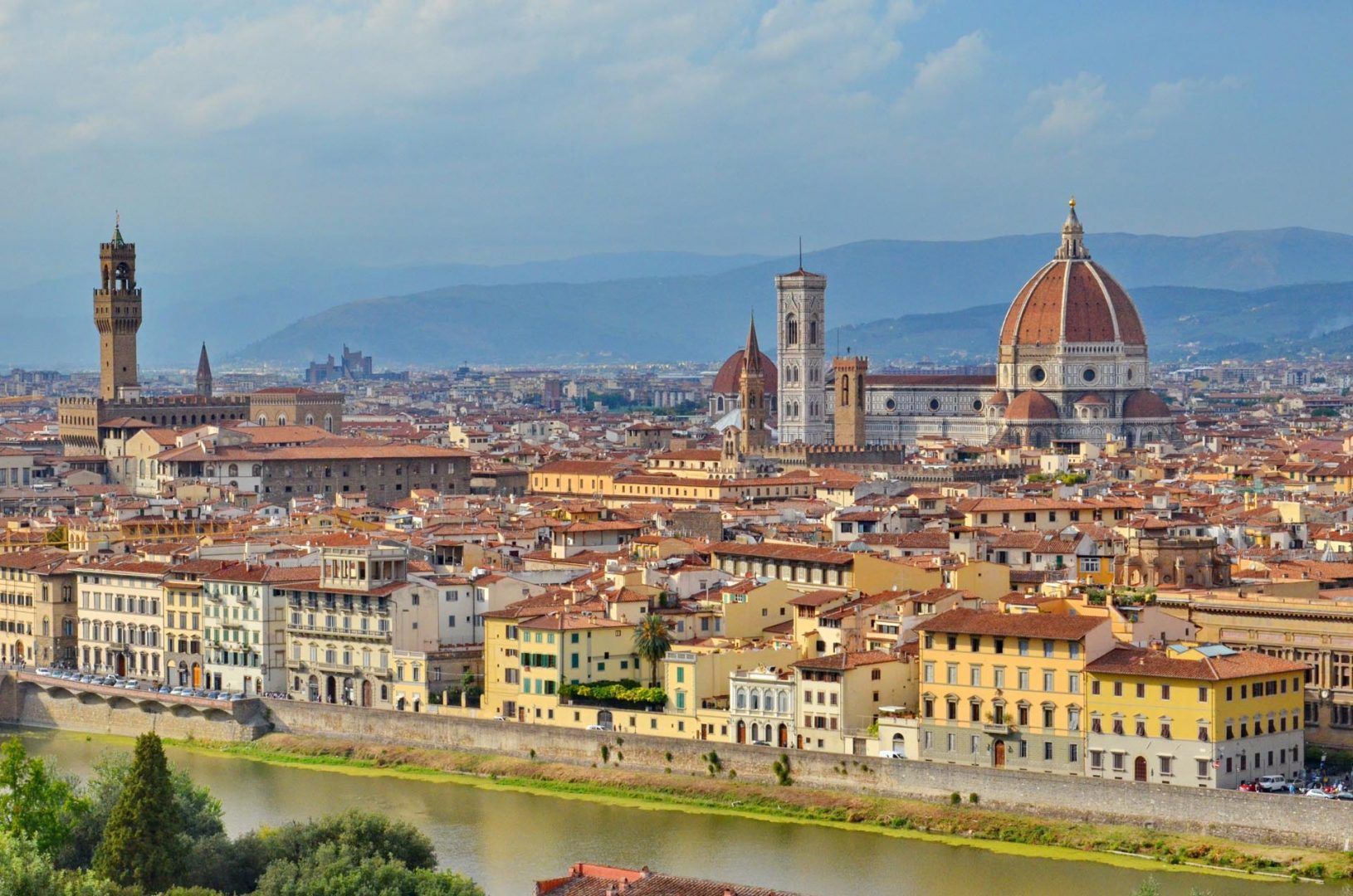
Florence cityscape © Bob Hilscher/Shutterstock
If you travel to Italy, chances are you’ll come across a festival of one kind or another. The Italians love a party, and there are thousands of festivals throughout the year. Religious processions are widespread, Good Friday being particularly well celebrated, and carnival (the big party before the sobriety of Lent). Then there are traditional events, such as the Palio horse race in Siena, food festivals, often celebrating regional cuisine, as well as arts festivals, often taking place against a backdrop of Roman or medieval architecture.
Read more about public holidays in Italy.
The resort area of Rimini is arguably the clubbing capital of Italy, mainly concentrated on the seafront itself, and in the fashionable enclave of Misano Monte (15km south of Rimini and about 5km inland). Also home to legendary nightclubs, cosmopolitan fashion powerhouse Milan does things a little differently. Milanos like to start their evenings early, with an extended “Happy Hour” that begins around six with an aperitivo - a pre-dinner drink that typically lasts until 9pm.
Though not short of night clubs, Roman nightlife is more focussed on al fresco food-based activities. Bustling, bohemian Trastevere comes up trumps for hearty homecooked food and, while Naples lays claim to inventing it, Roman pizza is something to write home about.
The saying goes that Rome wasn’t built in a day, so you shouldn’t expect to see more than a fraction of the city’s attractions in a short visit. That said, if you’re looking for ideas for a few days in Italy, a (preferably long) weekend in Rome will deliver in magnificent style. The same goes for city breaks in Venice, Florence and Milan, and lesser-visited Bologna and Genoa.
As for ideas for a week (or more) in Italy, you might consider touring the Italian Lakes, or soaking up southern Italy, taking in Naples, Pompeii, Vesuvius, the island of Capri, and Sorrento and the Amalfi Coast. Alternatively, exploring the island of Sicily makes for an idyllic longer break.
For more inspiration see some of the Italy itineraries from our Italy travel guide and local travel experts.
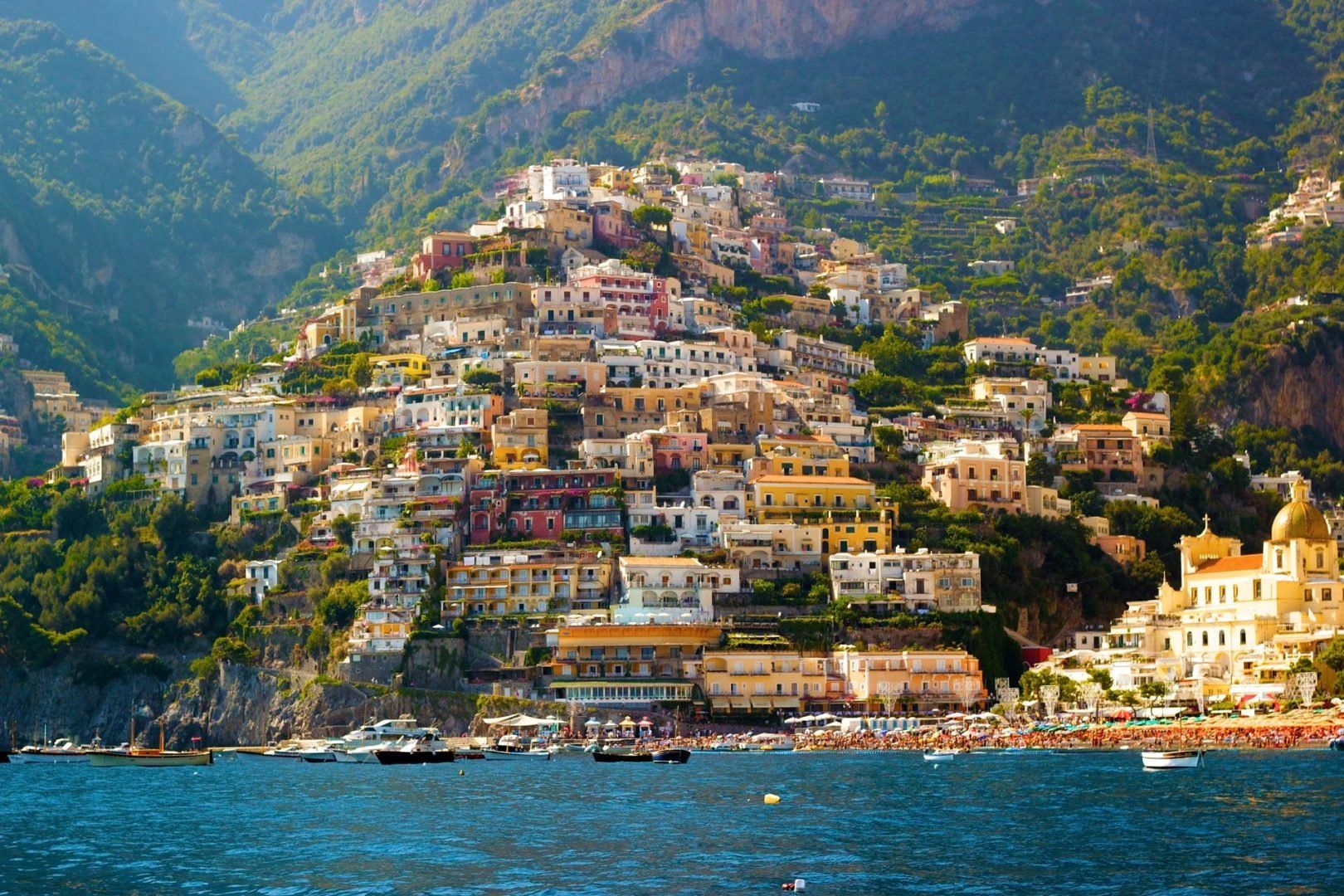
Positano, italy. Amalfi Coast © iacomino FRiMAGES/Shutterstock
From travel safety to visa requirements, discover the best tips for visiting Italy
For advice about practical matters when travelling in Italy, check the travel advice for Italy.
In general, you’ll find the south of Italy less expensive than the north. As a broad guide, expect to pay most in Venice, Milan, Florence and Bologna, less in Rome, while in Naples and Sicily prices drop quite a lot. As an indication, you should be able to survive on a budget of about €50–60 per day if you stay in a hostel, have lunchtime snacks and a cheap evening meal. If you stay in a mid-range hotel and eat out twice a day, you’ll spend closer to €130–140 per day. Transport and food are relatively inexpensive, and room rates are in line with much of the rest of Europe, but bear in mind that in July and August, when Italians take their holidays, hotel prices can escalate.
Italy is relatively safe for visitors, though you can reduce the chance of petty theft by taking sensible precautions - don’t flash anything valuable, and make sure bags can’t be snatched. You’re most at risk in busy areas, where pickpockets and scippatori or “snatchers” on scooters are most likely to operate.
Read more on travel safety in Italy, and for up to date information about safety and travel requirements for Italy, check government guidelines. UK nationals should heed Foreign, Commonwealth & Development Office advice, while travellers from the US should check governmental travel advisory guidelines for Italy.
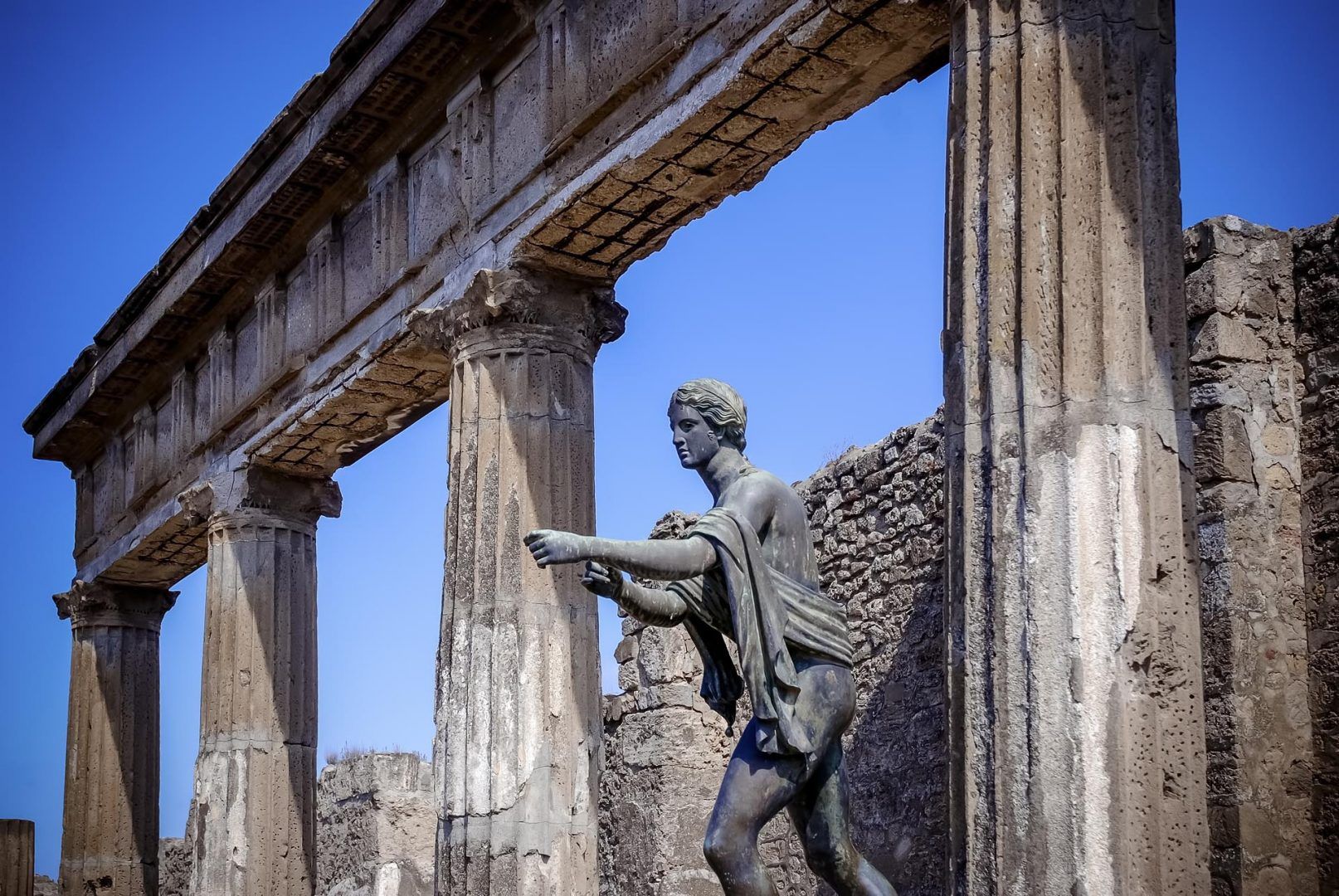
Statue of Apollo, Pompeii © BlackMac/Shutterstock
Top image: Amalfi coast, Italy © proslgn/Shutterstock
Use Rough Guides' trusted partners for great rates
written by
Rough Guides Editors
updated 06.06.2024